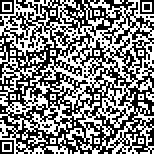下载中心
优秀审稿专家
优秀论文
相关链接
摘要

街景影像是感知城市物质环境的一种新型地理大数据。这种数据以人的视角详尽描绘了城市的可视环境,同时也隐性地表达了可视环境背后有关城市功能、社会经济和人类活动的信息。然而,传统的数字图像处理技术对街景影像的处理能力有限,不能高效地理解其中的语义信息。近年来,随着人工智能领域的不断发展,图像分析和机器学习方法取得了突破性的进展。以深度学习和计算机视觉为代表的前沿人工智能技术,为挖掘街景语义信息、理解和定量表达场所物质空间、建成环境的特征提供了强有力的支持。在此背景下,街景影像被广泛应用于地理学、城市规划等众多领域,并在此过程中出现了大量的新方法和新视角,为基于大数据的城市环境研究、人地关系研究、空间数据挖掘与知识发现研究提供了新的思路。本文综述了基于街景影像和人工智能技术的相关研究,从深度学习和计算机视觉两个方面对街景影像分析的支撑技术进行了梳理,并从场所物质空间量化、场所感知以及场所语义推测3个方面对街景影像研究的应用方向进行了总结,对其在发展过程中面临的数据稀疏性问题、分析方法的严谨性问题进行了归纳,同时讨论了未来研究的方向。
Street view imagery is a promising and growing big geo-data that provides current and historical images in more than 200 countries for urban physical environment representation and audit. Such data not only describes the visual details of the urban physical environment but also contains information about urban functions, socioeconomics, and human dynamics. Street view imagery has the potential to complement new and traditional data, such as remote sensing imagery and social sensing data.However, traditional digital image processing techniques for street view imagery handling are limited. Extracting rich semantic information from street view imagery efficiently has always been a challenging issue. Until recently, the development of artificial intelligence has led to numerous breakthroughs in image processing and machine learning. Indeed, the last few years have witnessed the fast development of deep learning and computer vision techniques, which facilitate the understanding of scene semantics from street view imagery and the quantitative representation of the urban physical and built environments. Many new applications, novel methods, and thoughts regarding street view imagery have emerged, covering research fields, such as geography, urban planning, urban design, urban economics, public health, environmental psychology, and energy. This trend has provided new perspectives for big geo-data-driven urban environment analysis, human–land relationship study, and spatial data mining and knowledge discovery.To summarize this research trend, this paper reviews the recent works on urban physical environment analysis using street view imagery. The key supporting techniques for street view imagery analytics are discussed in terms of two dimensions: deep learning and computer vision. Deep learning has been applied recently to various computer vision tasks, such as image classification, image segmentation, and object detection. The success of deep learning techniques is attributed to their ability to learn rich high-level image representations as opposed to the hand-designed low-level features used in other image understanding methods.Additionally, this paper summarizes the street view imagery applications in three aspects: place representation, sense of place, and place semantics reasoning. “Place representation” includes works that extract visual elements that constitute the urban physical environment; “sense of place” refers to works that use street view imagery to understand how people respond to their surrounding environments regarding perceptions and emotions; and “place semantics reasoning” refers to studies that attempt to infer and estimate invisible factors, socio-economics, demographics, and human dynamics from street view imagery.More importantly, the issues of this research field, such as the spatio-temporal uniformity of street view image data, and the lack of solid workflow of data analytics, are highlighted.Finally, the development prospects of street view imagery are discussed. Crowdsourcing platforms and the field of the autonomous vehicle will increase the number of street view image sources. More issues, including how physical environments are involved and whether a universal law exists regarding the distribution of physical elements in space, are expected to be explored in future works.

